Strength training is beneficial for all kinds of cyclists and doesn’t need to use a lot of time or energy.
A couple of short weightlifting workouts a week can increase your power output on the bike, improve efficiency and prevent cycling injuries.
Follow our simple exercises to add some weight work to your training. Plus, keep reading to find out why it could prove beneficial, plus how and when you should lift weights.
The best strengthening exercises for cyclists
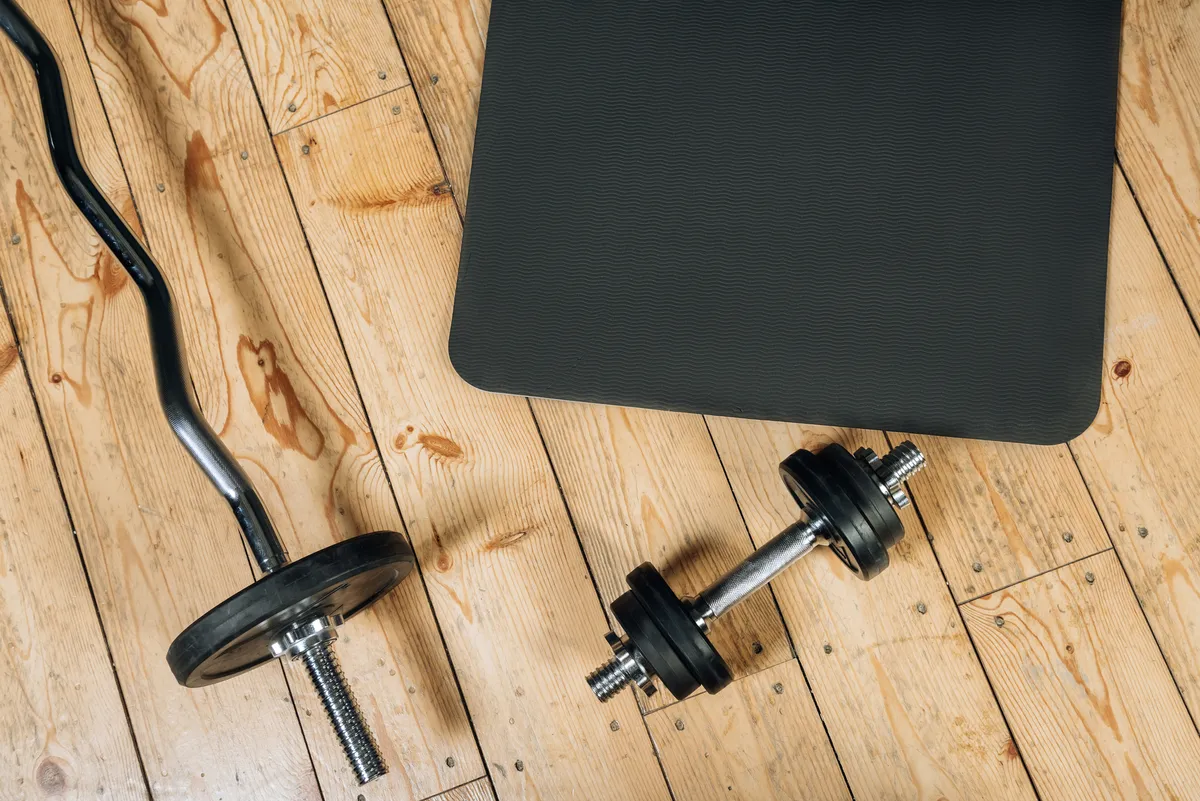
Although we suggest multiple exercises below, you don’t need to fit them all into every weights session.
Jacob Tipper, from Jacob Tipper Performance Coaching, says: “The simple formula should be two to three key exercises or movements that encompass triple extension (extending from the ankle, knee and hip, thus working all key cycling muscles) and performing two to three sets of five to eight reps.”
Ben Plenge, a coach from the Strength Factory who has worked with professional downhill and enduro racers, also recommends just a handful of exercises: a squat, an upper-body pushing exercise such as a pull-up, an upper-body pulling exercise such as a row or chin-up, a single-leg exercise and some core.
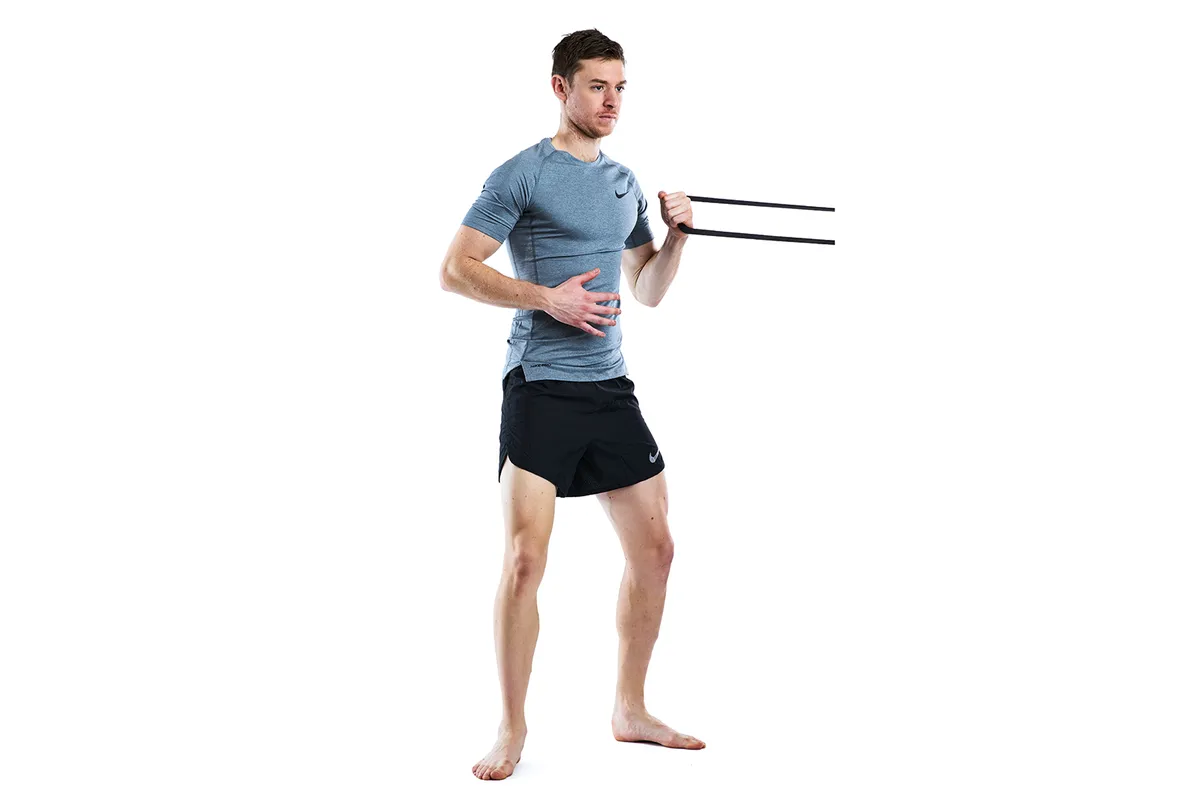
Core training is especially important for cyclists, who are susceptible to lower-back pain. Fitzgerald says isometric exercises, such as bird dogs and planks, that improve the stability around a joint, can help.
To fit two forms of strength training into one session, it’s a good idea to warm up for your weightlifting with three or four core exercises.
Lifting weights is often synonymous with going to the gym. But you can do all these exercises at home with or without free weights.
Lunge
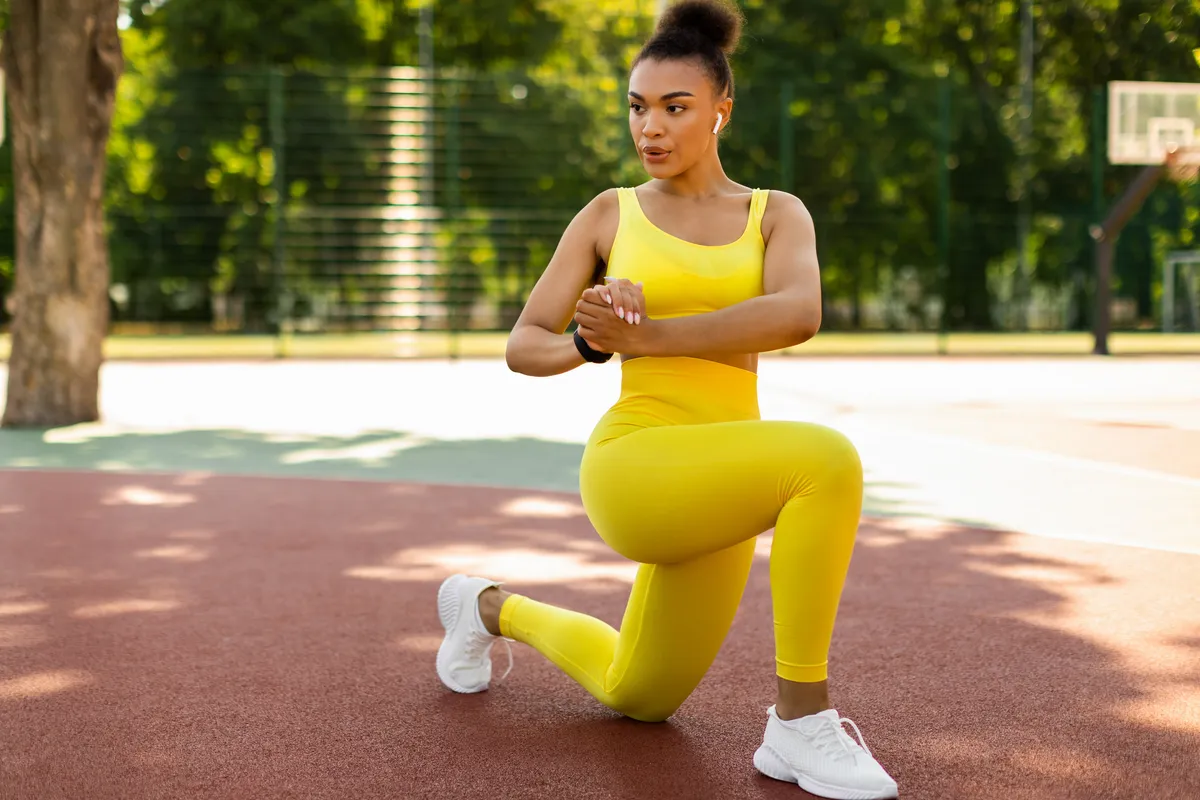
The lunge is a single-legged movement specific to a linear sport such as cycling.
Hollie Maskell, a physio from Physio Fit Hollie, says: “This isolates the quadriceps and gluteal muscles, which support the knee and hip joint.
“It will improve your balance, muscle power and coordination.”
From a standing start, step forward with one leg and dip down until your back knee is just above the floor.
Then steadily straighten your legs to return to the starting position.
To increase the load, work with a barbell across your shoulders or hold dumbbells.
Goblet squat

The goblet squat is a brilliant exercise for cyclists because it strengthens the quads, glutes and hips, all key muscles used in cycling.
Stand with your feet shoulder-width apart. Hold a dumbbell or kettlebell about 20cm from your chest.
You should feel your abs and back muscles tighten to counter this.
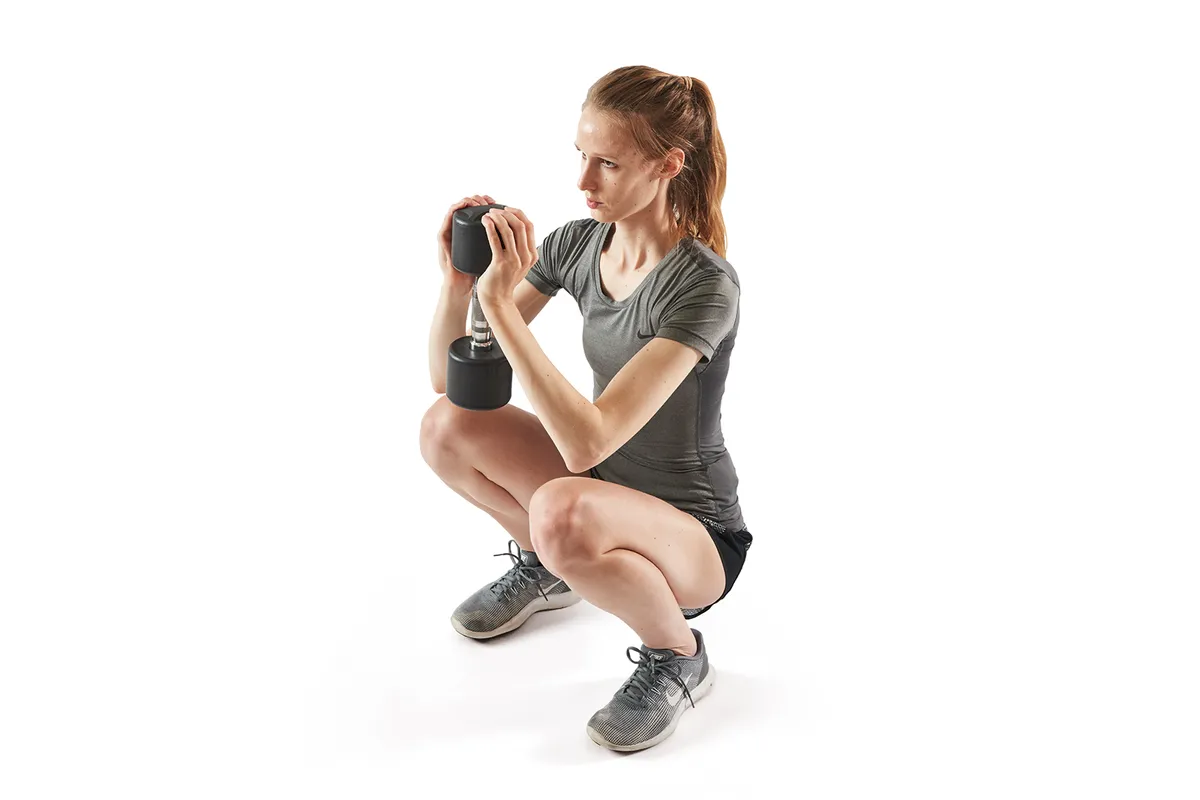
Now bend your knees and squat as far as you can before returning to the start.
By altering where you hold the weight, you can work your core too.
“Holding the weight in front of you helps to recruit not only the large muscles like the rectus abdominis and erector spinae but some of the deeper postural muscles too,” explains Bianca Broadbent, a physio and bike fitter with Fit Your Bike.
“This helps you to hold a stronger position while pushing hard on the pedals.”
Do three sets of six to eight reps.
Single-arm row
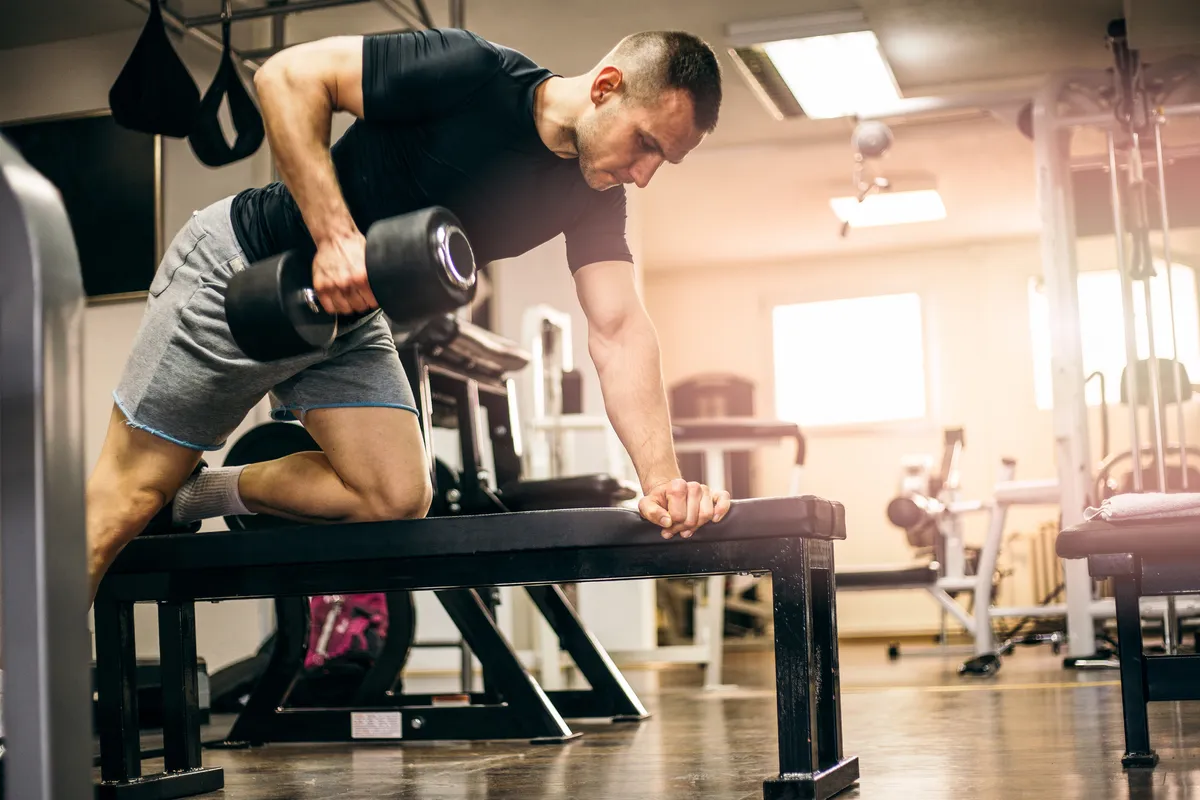
When climbing out of the saddle, one arm pushes and one arm pulls with every pedal stroke.
Single-arm rows, with a free weight or a band, work those pulling muscles.
Bend down and rest a knee on a weight bench, or a sofa if you’re working out at home.
Place your inside hand on the bench and hold a dumbbell in your outside hand.
With a straight back and tensed core, row your weighted arm backwards until your upper arm is in line with your back.
Lower the weight back to the starting position.
Do three sets of five to eight reps.
Pull-ups
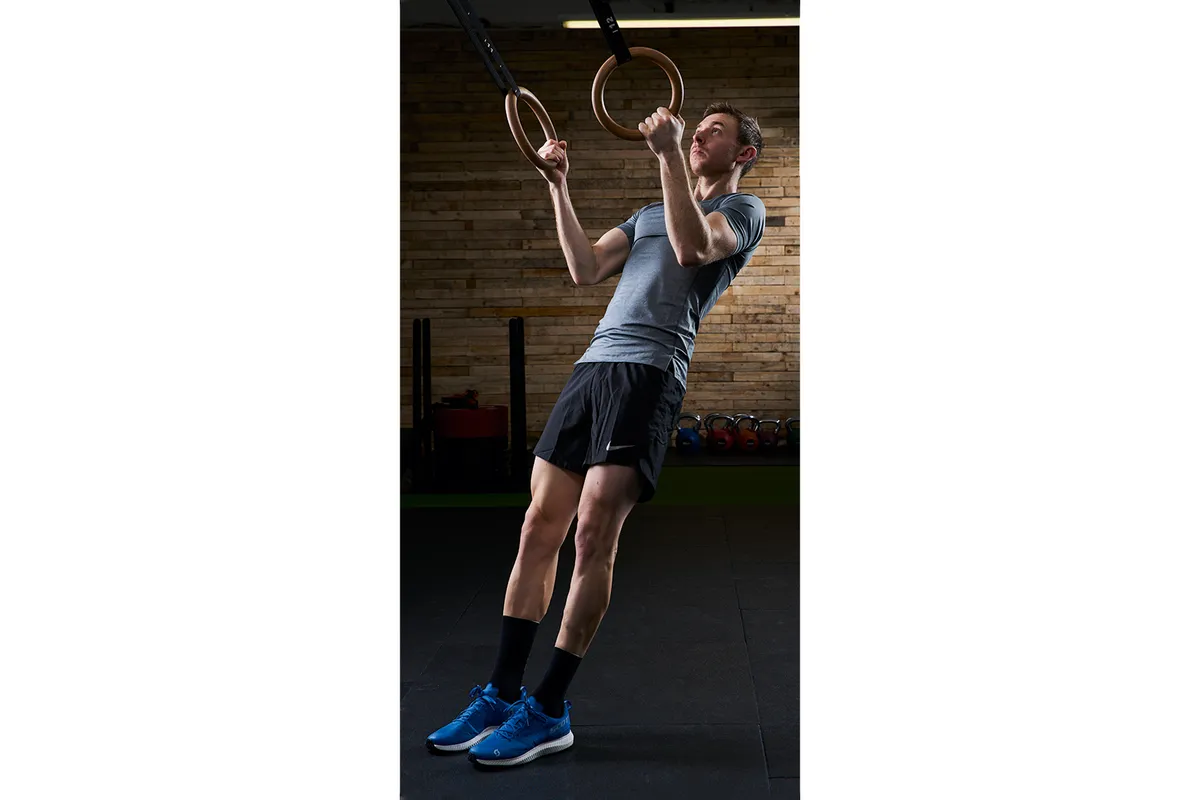
“Some cyclists lack adequate upper-body strength to support their weight over a prolonged period,” says Broadbent.
“This can result in muscle fatigue and cause the rider to adopt a hunched position.”
If you have access to a gym, grip TRX-style suspension rings or a pull-up bar just wider than shoulder-width apart with your palms facing down then pull your body upwards.
Aim for 3x 12 reps, two to three times per week.
Plank

This exercise works the deep stabiliser muscles of your trunk and is far more beneficial and relevant than sit-ups or crunches.
From a kneeling position on a mat, put your forearms down and extend your legs.
Support yourself on your forearms and tips of your toes while trying to keep your back as flat as possible. It helps to contract your abdominal muscles.
Hold the position for 30 to 60 seconds.
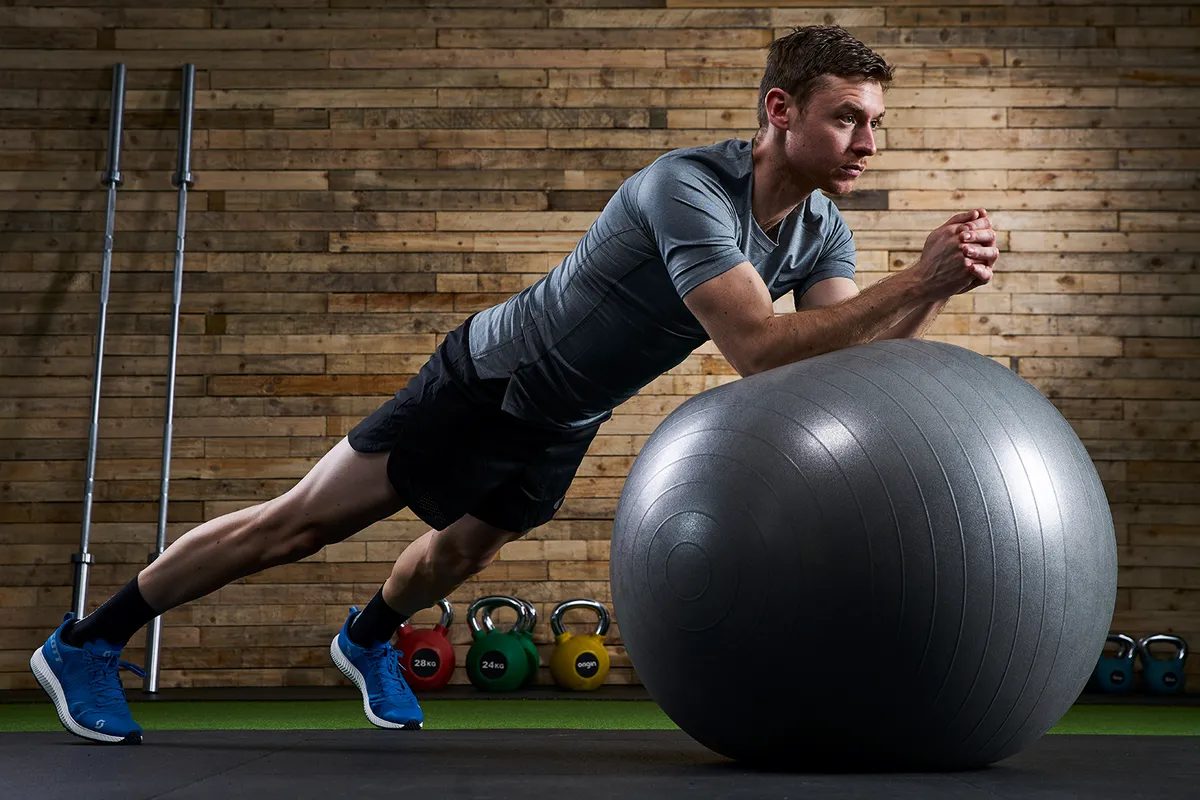
As a twist, you can try a dynamic plank.
Adopt a plank position with your forearms on a Swiss ball.
Lean into the ball with your forearms and ensure your hips don’t hang down.
Keeping your body stable, slowly push the ball away from you, pause and then return to your original position.
Aim to do three reps, holding for 45 to 60 seconds each time.
Dumbbell split squats
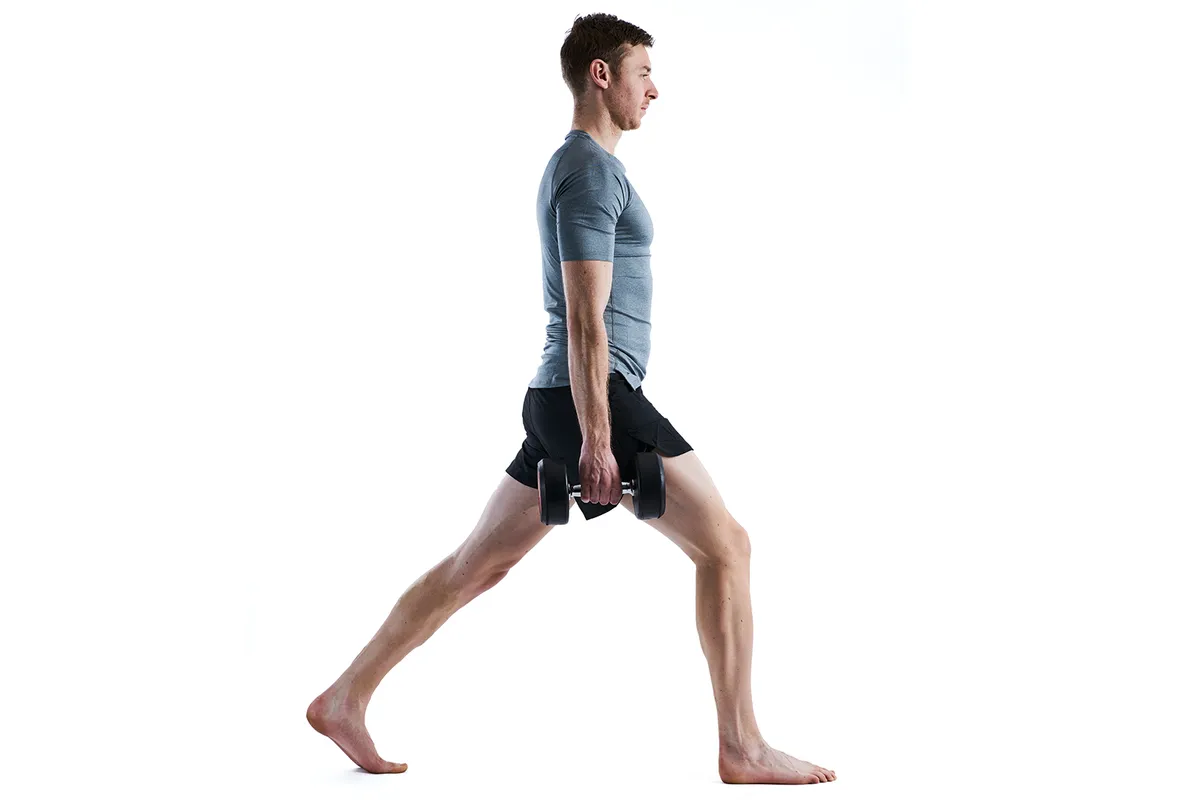
Many cyclists have tight hip flexors, which can cause hip pain from cycling.
Dave Clarke, from Hybrid Performance Strength and Conditioning, says: “This tightness is caused by spending many, many hours on the bike, but also by specific weaknesses.”
Dumbbell split squats are a good way to strengthen your hips, according to Clarke.

Stand with one foot in front of the other and grab two dumbbells.
Shift your weight onto your front leg and squat by bending both knees.
Keep your hips straight. Pause at the bottom, then drive your foot into the floor to rise up again.
Do three sets of five reps per leg.
Single-leg glute bridge
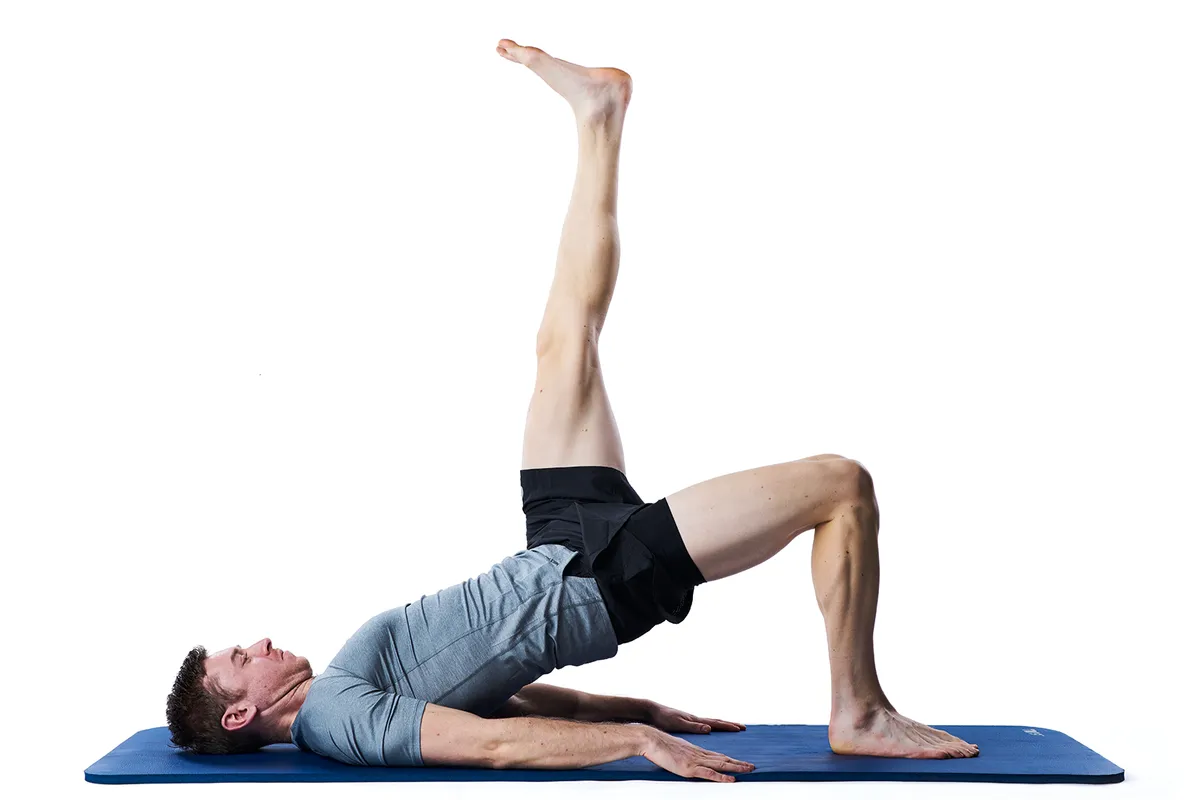
Nichola Roberts, from Velophysio, recommends the single-leg glute bridge to combat knee pain.
“This targets the glute max – a powerful cycling muscle – and stabilises the hip joint to prevent the imbalances that cause knee pain,” she says.
Lie on your back with your knees bent up and your feet on the floor.
Lift one leg up, so your knee is over your pelvis, then push through the heel of the foot on the floor to lift your pelvis.
Aim for three sets of eight reps per side.
Deadlift
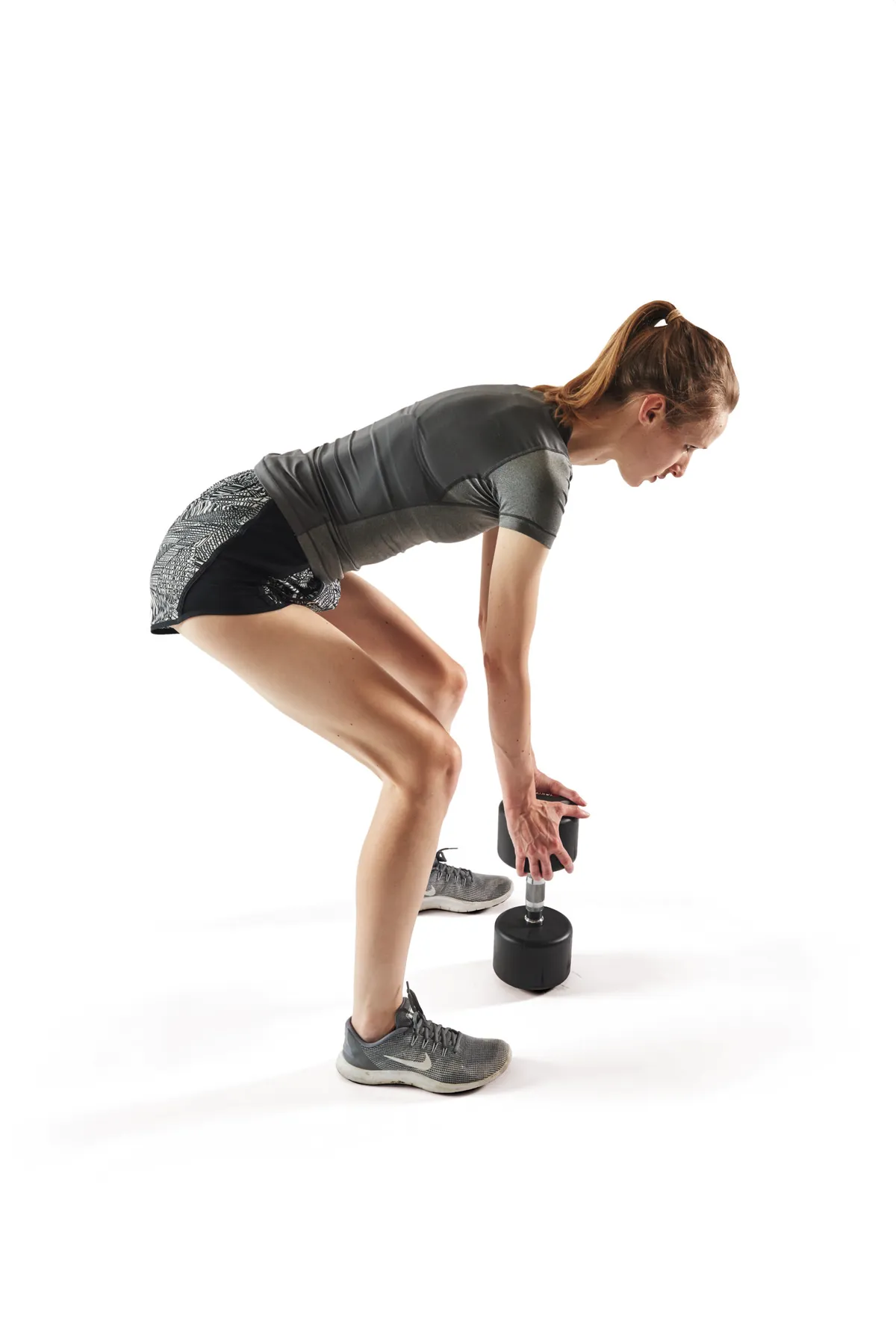
Deadlifts strengthen and increase the flexibility of the lower back and the hamstrings, both of which are typically weak and tight in cyclists.
“You’ll target the stabilising muscles in the spine, as well as the spinal extensors, glutes and hamstrings,” says Broadbent.
“This will have a widespread impact on your ability to produce force through your legs.”

If you have access to a gym, use a barbell, but a dumbbell will also work.
Stand with your feet shoulder-width apart, bend your knees and hinge forward at the hips and spine, maintaining a relatively flat spinal position.
Pick the weight up from the floor, and push through your feet so you extend through your hips, knees and ankles back to your starting position.
Perform 3x 12 reps.
The benefits of strength training for cyclists

Tipper says: “Weight training can be a real advantage to all athletes, but especially to ageing and more petite male and female athletes, where force production may be more of a limiting factor.”
Plenge says strength training is “super-important for mountain bikers”.
He adds: “It’s going to make you quicker up the hill and on the flat, and make you quicker, more confident and safer on your bike on the way down.”
Although some successful cyclists don’t weight train, Matt Fitzgerald, from 80/20 Endurance coaching, says: “It’s beneficial and recommended for any endurance athlete who is serious about performance.”
“If you do it right, it improves performance and, although a little bit less than in running, reduces injury risk and improves body composition.”
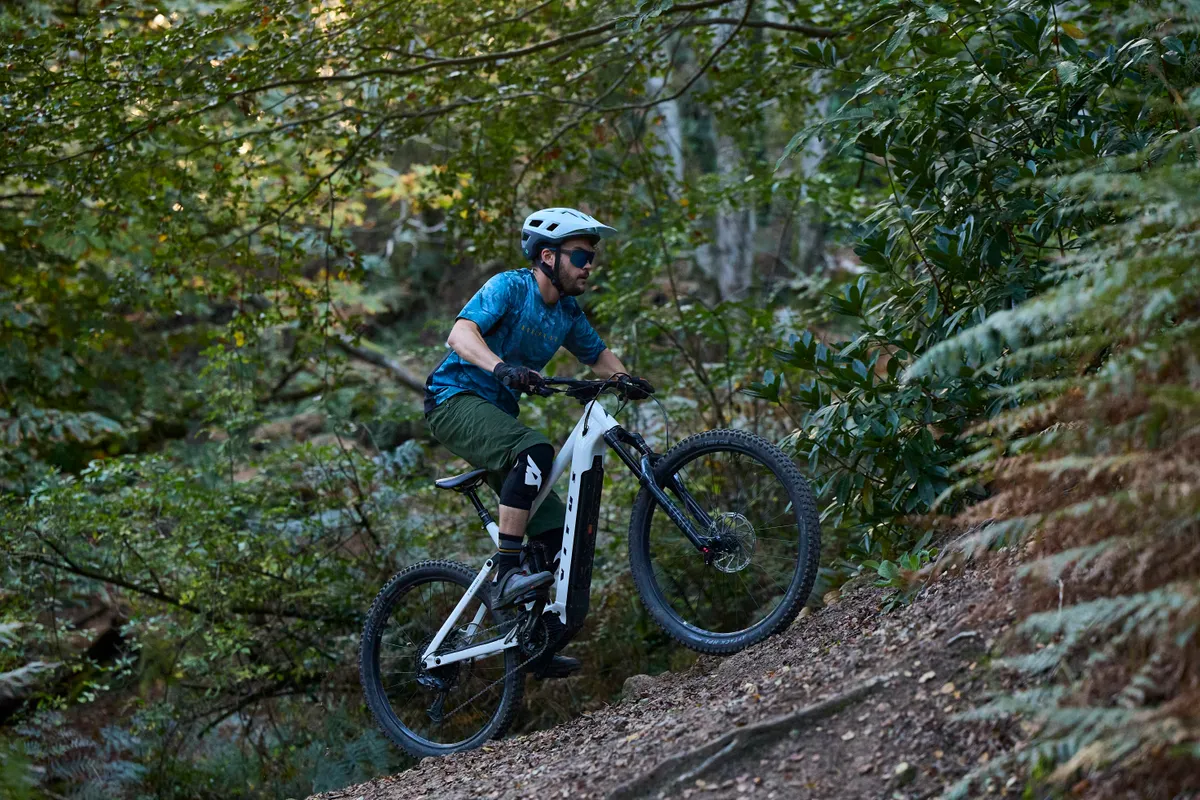
While not a benefit in itself, a higher proportion of muscle to fat increases your power-to-weight-ratio. It can also raise your basal metabolic rate, so you burn more calories at rest, helping you to lose more fat.
Fitzgerald says strength training can help you keep cycling as you get older. Lifting weights counteracts physiological processes associated with ageing, such as sarcopenia (muscle wastage).
You don’t need to worry about getting heavy and slow from strength training.
Any muscle you gain will be functional muscle mass, which should make you faster on the bike. And to gain a lot of muscle, you’ll need to be in a substantial calorie surplus.
You’ll also need to lift weights more regularly than is recommended for cyclists.
How cyclists should strength train
Tipper, who coaches EF Education-EasyPost rider Ben Healy, recommends keeping weight training straightforward and short.
He adds: “It doesn’t need to be too stressful and with this being accessory work to your main sport, then 20-30 minute sessions can suffice for the time-limited athlete.
“Even pros don’t need to spend over an hour in the gym.”
Progressive overload
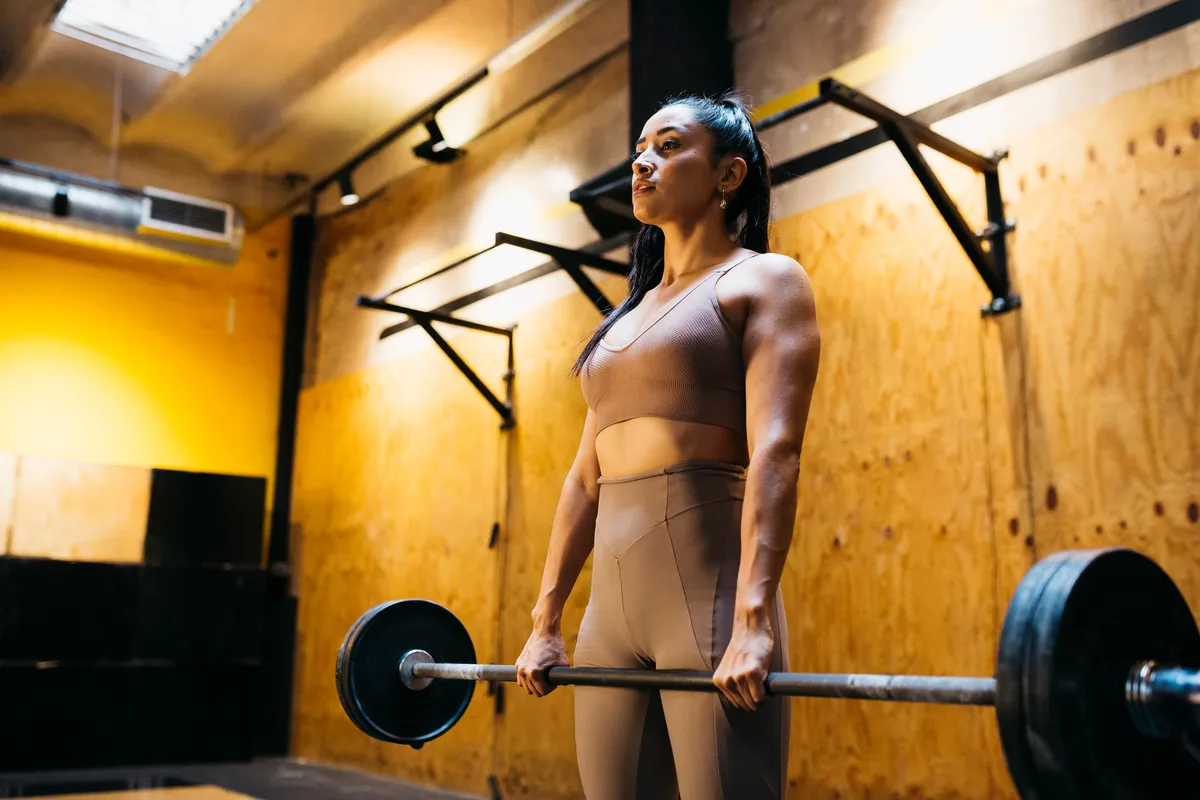
Tipper advises lifting as heavily as you can with good technique and “never lifting to absolute failure".
If you’re unsure about how to lift weights safely, please consult an expert before doing so.
He adds: “Start easily and increase the loads very gently, giving your body time to adapt.
“You may have relatively strong legs from cycling, but you need to give the rest of your body time to adapt before lifting anything too heavy."
Plenge agrees with Tipper about progressive overload.
“With strength training, you start at your current level of strength then do exercises that progressively overload your body with stress,” he says.
“Your body doesn’t like stress, so it gets ready for it to return by getting stronger, building muscle or adding collagen tissue to your tendons to make them stiffer and stronger.”
Then you make your training a little harder for your body to adapt again.
Recovery
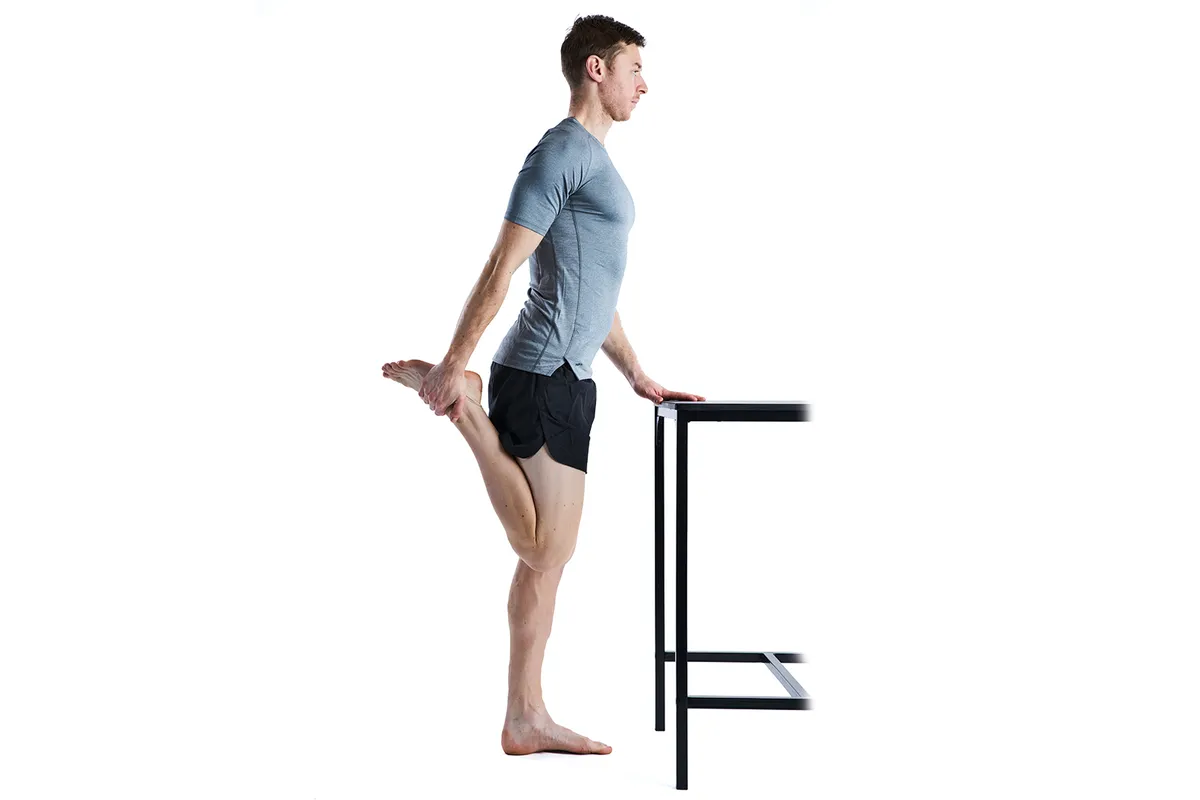
To enable your body to adapt, it needs recovery time.
Plenge says: “The harder you train, the harder you have to recover,” pointing out that you have to focus more on recovery the older you get.
Good recovery techniques include nutrition, sleep and doing a good warm-up and cool-down, according to Plenge.
When cyclists should strength train
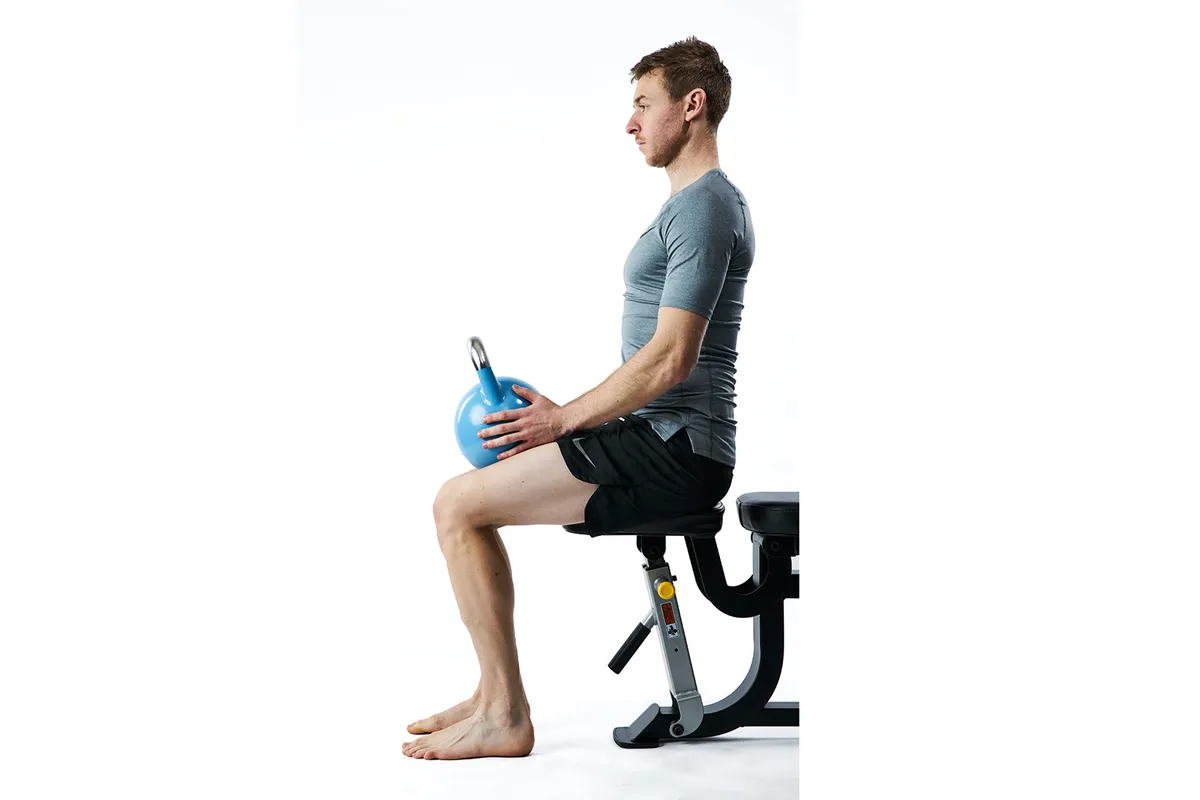
Cyclists are generally recommended to do the bulk of their weightlifting as part of their winter training.
The idea behind this periodisation of weight training is that, at least initially, your legs will be sore for a few days after a weight workout.
While base training, when overall training intensity is low and races or sportives are distant, this isn’t that problematic.
Plenge says you should see strength training as a long-term fitness investment.
You should tell yourself: “‘I’m doing this now so I can be disgustingly fast in the summer or even next year’,” he adds.
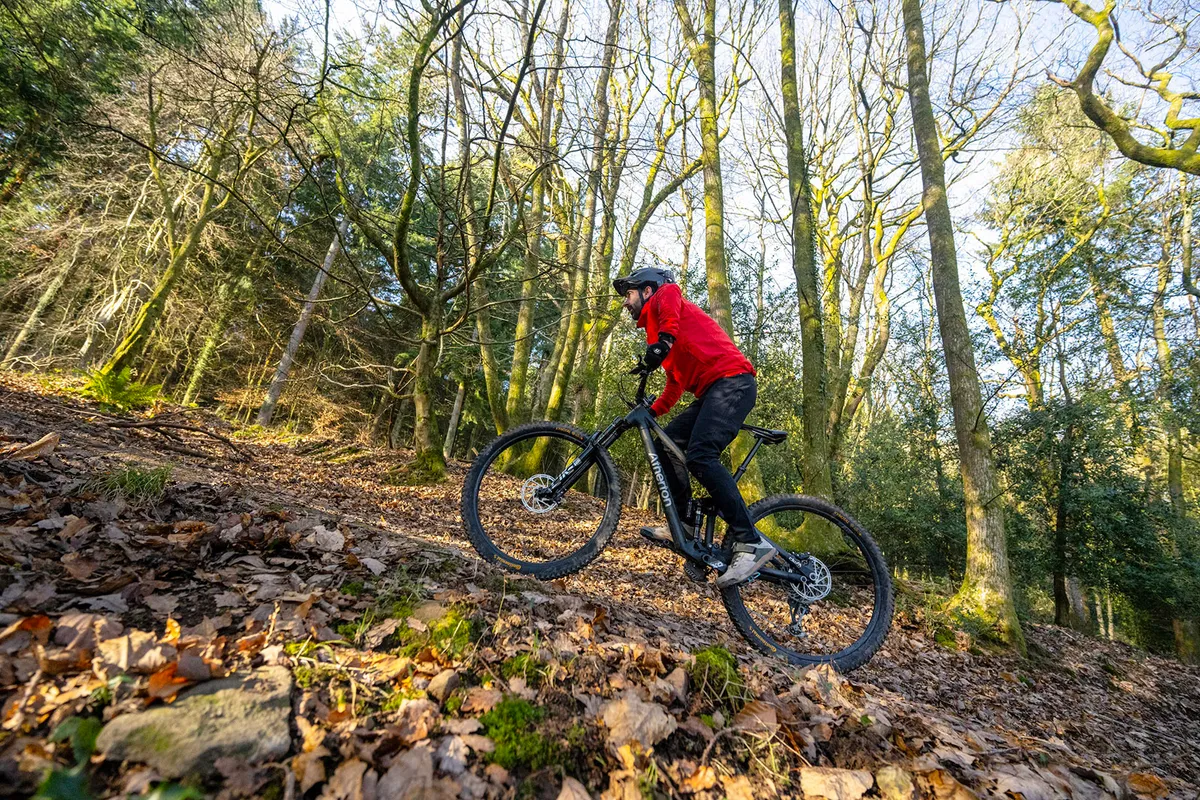
As a road cyclist, he says: “You might stop strength training in March for the summer to get in the volume of training that you require.
“But as a mountain biker, you might continue doing one strength training session a week in summer to maintain your strength.”
When you are strength training, Plenge recommends having a plan in mind for each session, as you would if you were doing intervals on the bike.
This helps you maximise your training time, track your progress and increase difficulty as you get stronger through heavier weights, more reps or a combination of the two.
It may seem counterintuitive, but it’s best not to lift weights on recovery days from cycling.
In The Hill Climb Handbook, Dr Emma Wilkins and Tom Bell say this can cause a lot of fatigue.
Instead, they recommend scheduling weight training on other days before or after your ride, provided you refuel properly in between sessions.
